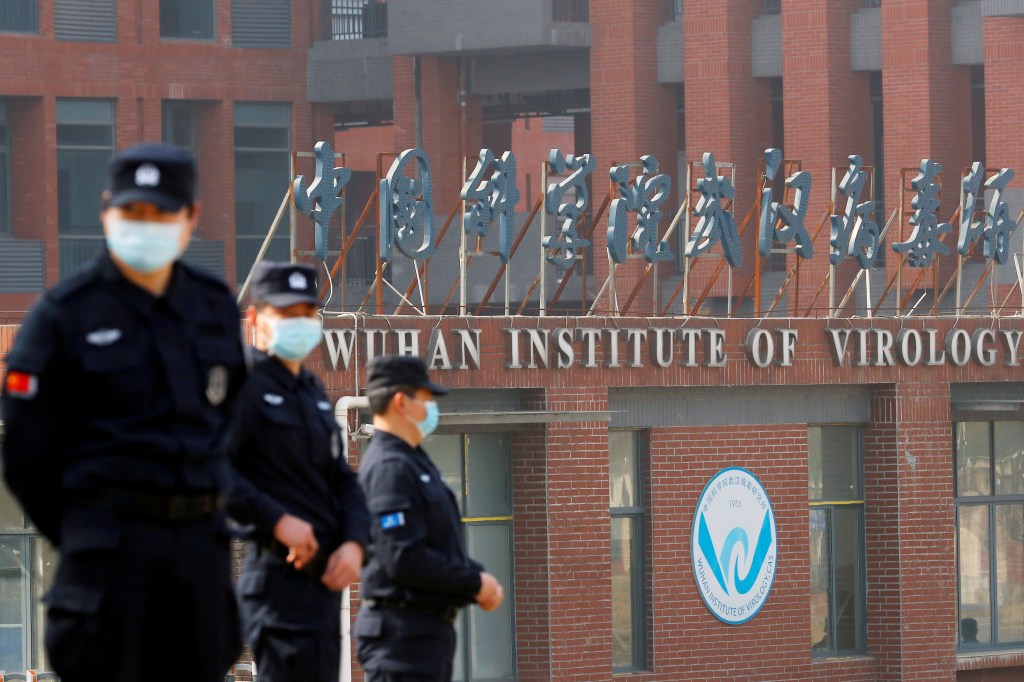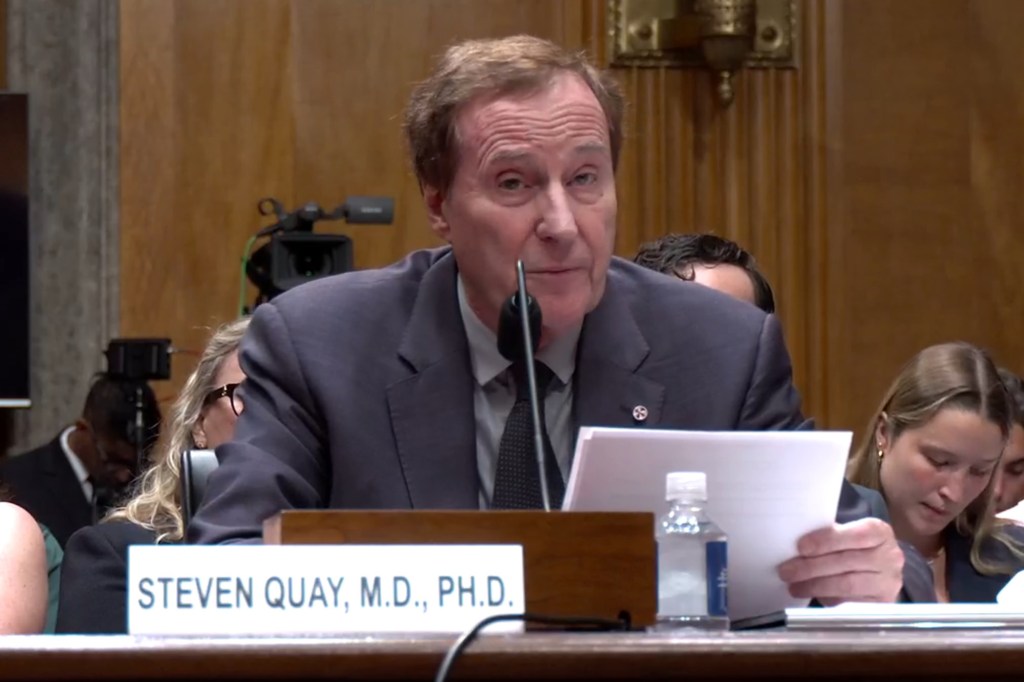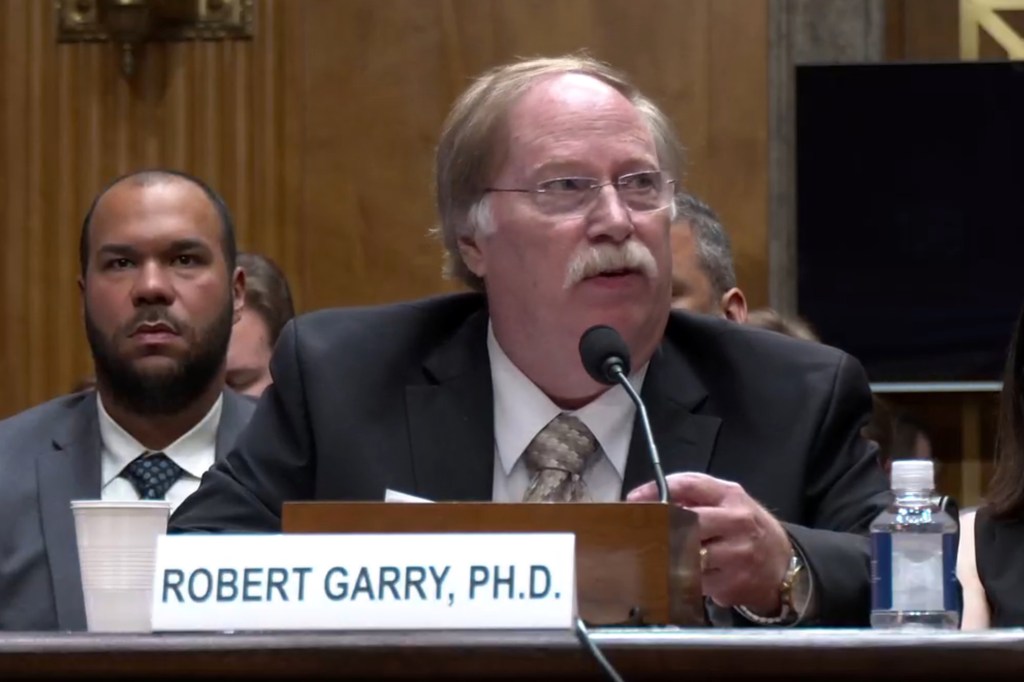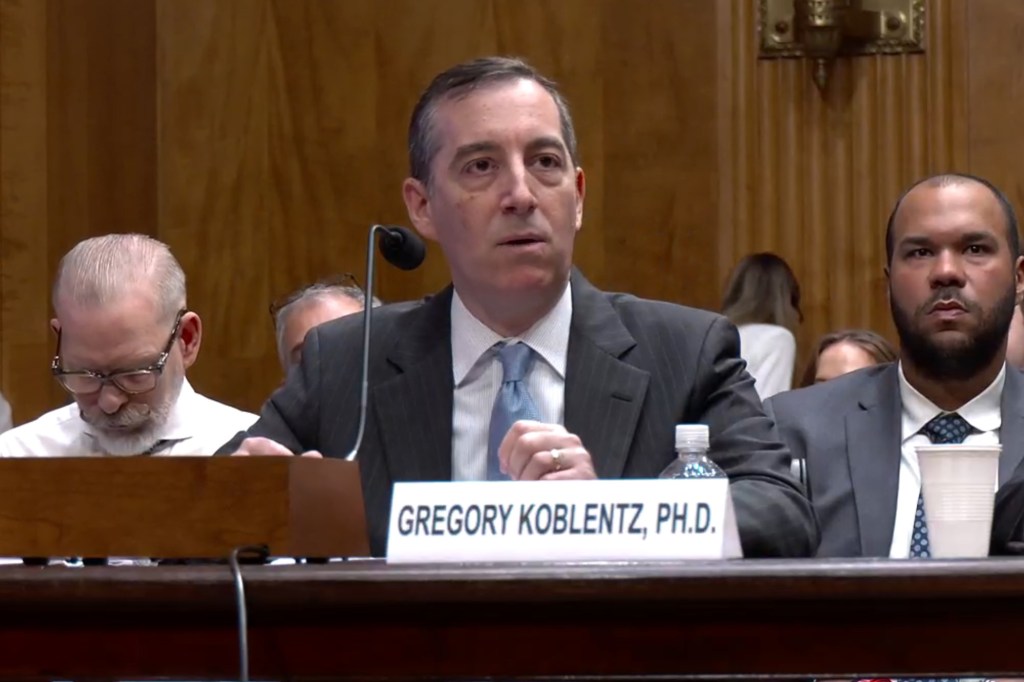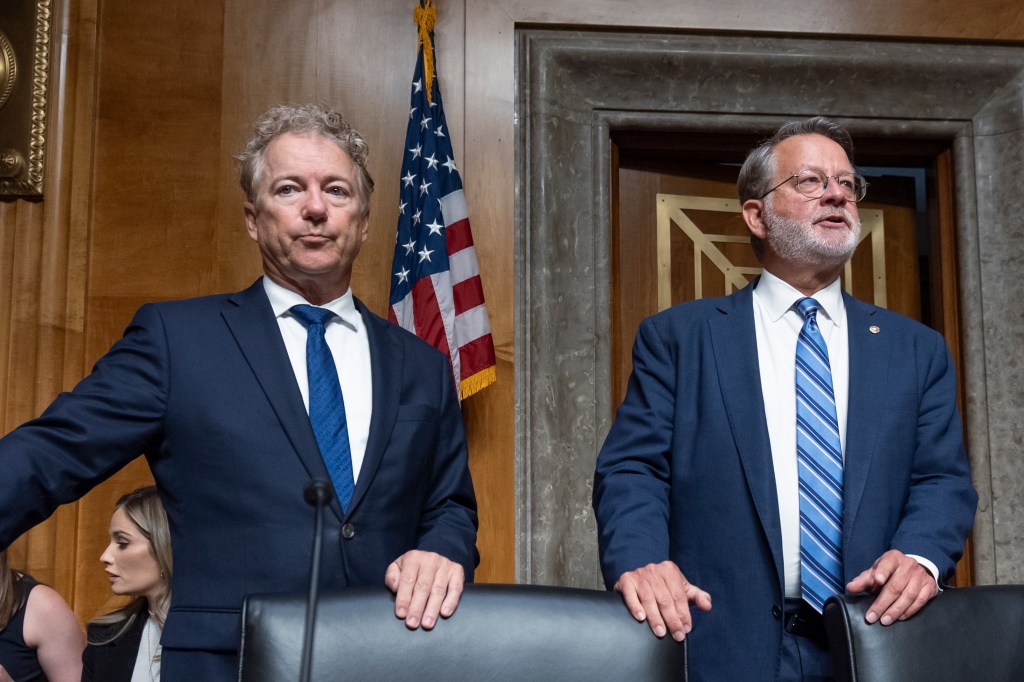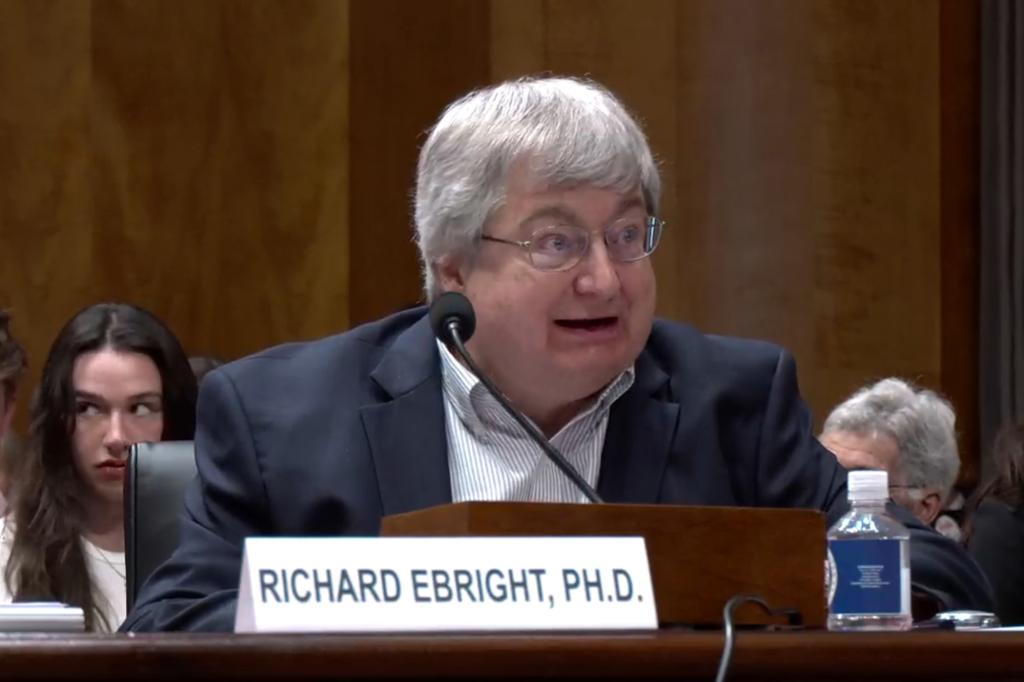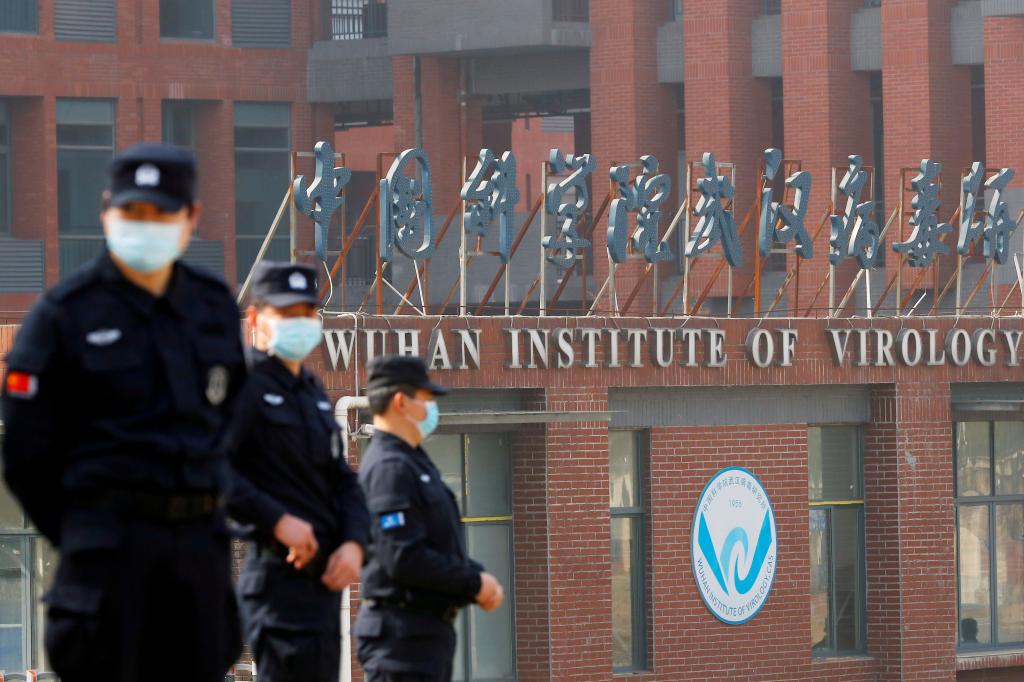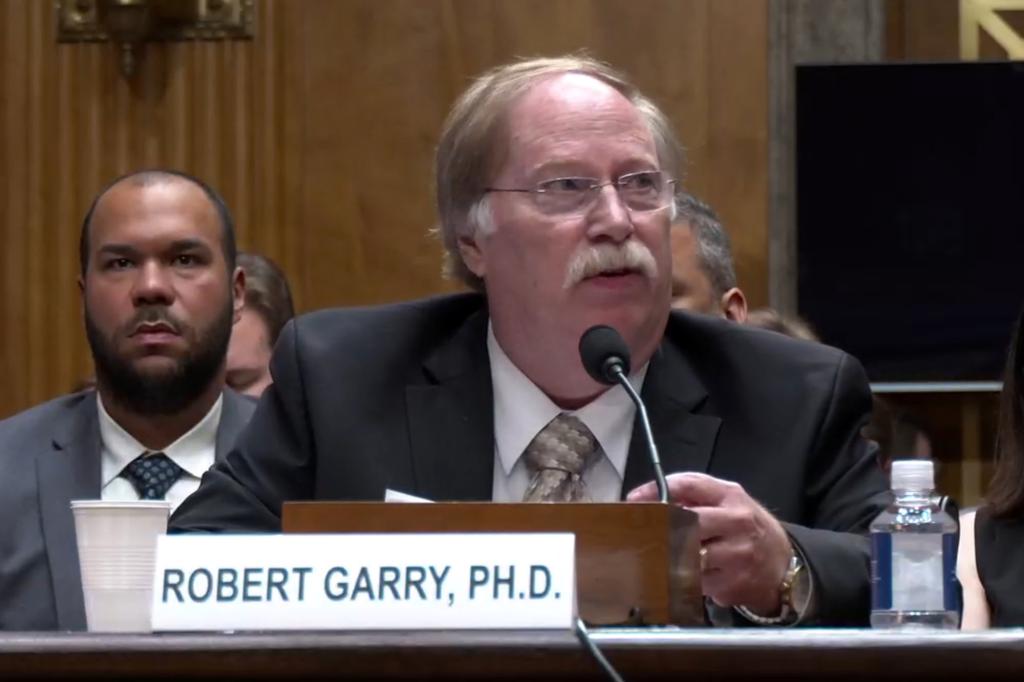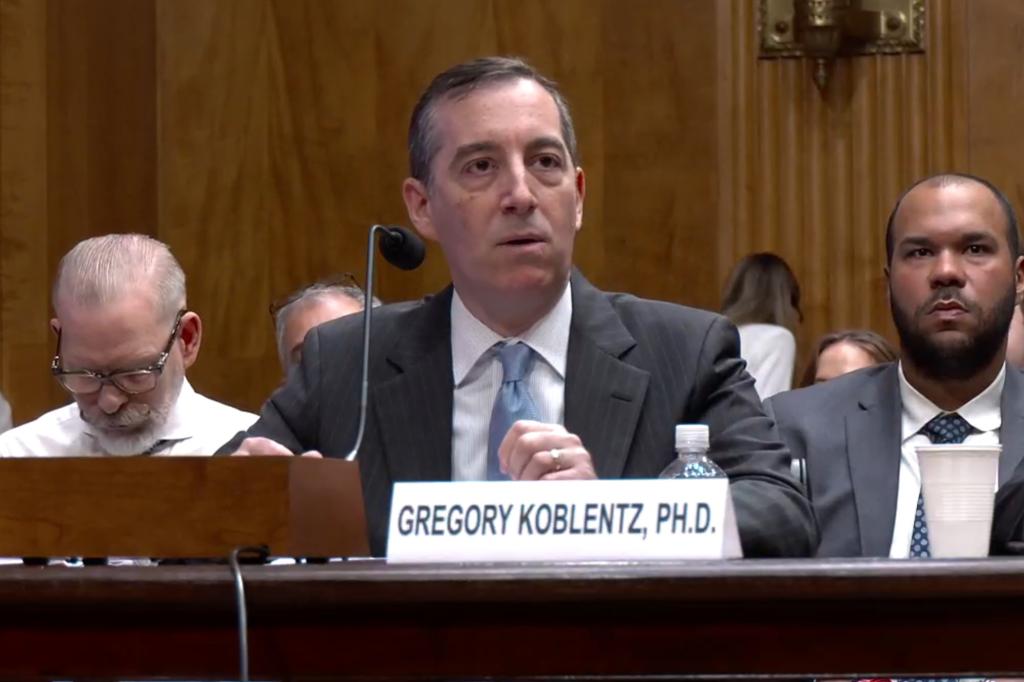Scientific expert declares there is ‘zero’ evidence for natural COVID-19 origin
A panel of scientists fiercely debated Tuesday whether COVID-19 stemmed from a laboratory accident or naturally spread from animals to humans, with one expert declaring there was “zero” evidence for a natural origin of the pandemic that killed millions around the world.
Rutgers University molecular biologist Dr. Richard Ebright said in his opening statement before the Senate Homeland Security Committee that the “large preponderance of evidence indicates SARS-CoV-2, the virus that causes COVID, entered humans through a research incident.”
Ebright, who was joined in arguing for the so-called “lab-leak theory” by Dr. Steven Quay, a former professor at Stanford University School of Medicine, added that “no — zero — secure evidence points to COVID’s natural origins.”
“The probability this actually came from nature based on these features is one in a million,” Quay concurred.
COVID-19 emerged in Wuhan, China, more than 800 miles from “the closest bats harboring SARS-CoV-2 live viruses that could have served as progenitors,” Ebright explained.
The now-debarred Wuhan Institute of Virology (WIV), the “global epicenter of research on bat SARS viruses,” he went on, carried out US-funded, gain-of-function research on the viruses between 2014 and 2021.
During that research period, the WIV conducted “the world’s largest research program on bat SARS viruses” and had “the world’s largest collection of bat SARS viruses” — including “the virus most closely similar to SARS-CoV-2,” Ebright added
Additionally, the Rutgers prof said, the Wuhan lab obtained SARS viruses that had a “high pandemic potential” in the four years before COVID-19 — and just one year earlier, had run research that genetically modified the viruses “that match in detail the features of SARS-CoV-2.”
By 2015, Ebright noted, scientists at a meeting of members of the Royal Society and US National Academy of Sciences had “singled out” the WIV experiments as the “most likely of all research in the world to trigger a pandemic.”
That research was funded in part by a more than $4 million National Institutes of Health (NIH) grant to the since-suspended Manhattan-based public health nonprofit EcoHealth Alliance, about half a million dollars of which directly flowed to WIV.
Another $815,000 was given to WIV through subgrants that originated with the US Agency for International Development (USAID) and passed through the University of California, Davis, and EcoHealth.
EcoHealth lost its status as a federal grantee for likely violating biosafety standards with its WIV project, titled “Understanding the Risk of Bat Coronavirus Emergence,” and failing to immediately report the experiments, which resulted in a modified virus that was 10,000 times more infectious in lungs, 1 million times more infectious in brains and three times more lethal in humanized lab mice.
The “smoking gun” evidence for a lab origin of COVID-19, Ebright clarified, came from a separate EcoHealth proposal to the Defense Advanced Research Projects Agency (DARPA), which was never funded, that proposed the “exact feature” of a furin cleavage site in the virus.
“SARS-CoV-2 is the only one of more than 800 known SARS viruses that possess a furin cleavage site,” he said.
EcoHealth President Dr. Peter Daszak also downplayed the degree of Chinese cooperation in its DARPA proposal arguing the experiments were going to take place in a North Carolina research lab “under very high safety conditions,” Quay pointed out.
Start and end your day informed with our newsletters
Morning Report and Evening Update: Your source for today's top stories
Thanks for signing up!
But “the marginal comments in drafts — that were only obtained through [Freedom of Information Act requests] — said that Wuhan would lead the project since it was going to be “cheaper” and “faster,” Quay said.
Homeland Security Committee ranking member Sen. Rand Paul (R-Ky.) asked Ebright at one point whether his staunch support for the lab leak hypothesis was a “right-wing conspiracy” or he was a “crazy Republican partisan.”
“I’m a registered Democrat. I voted for [President] Biden. I had a Biden sign on my lawn and had a Biden bumper sticker,” Ebright began before Paul cut in to say, “All right that’s enough of that,” causing lawmakers and attendees in the hearing room to erupt with laughter.
EcoHealth has denied that the experiments constituted gain-of-function research — despite testimony from NIH principal deputy director Dr. Lawrence Tabak last month stating that it was — or that its work resulted in a lab accident that led to the pandemic.
An EcoHealth spokesperson disputed a part of Ebright’s testimony in a statement to The Post, saying the WIV experiments produced “genome copies, not infectious viruses,” which include “dead virus and non-infectious RNA.”
“It’s important to emphasize that the research in question has no — zero — civilian practical applications,” Ebright said of the gain-of-function experiments.
“Gain-of-function research on potential pandemic pathogens is not used and does not contribute to the development of vaccines, and is not used and does not contribute to the development of drugs,” he added.
Quay in his opening remarks said that scientists “dependent on NIH or NIAID funding may have pressure to publicly agree with orthodoxies,” such as arguing against SARS-CoV-2 escaping a research lab.
That implicated one of the panel’s other witnesses, Dr. Robert Garry, who admitted to receiving as much as $25 million in NIH funding during the hearing and authored a controversial scientific paper — prompted by then-National Institute of Allergy and Infectious Diseases (NIAID) Director Dr. Anthony Fauci — in early 2020 to debunk the lab leak theory.
Ebright in his opening remarks noted that the paper, “The proximal origin of SARS-CoV-2,” was published in March 2020 as “an opinion piece,” not backed by available evidence, and completely disproven by “private communications” of the authors that were released last year by the House Select Subcommittee on the Coronavirus Pandemic.
“Four of the authors of that paper,” he said, “in their private communications show clearly that they knew the conclusion that they state in that article is invalid.”
Ebright and other scientists have twice requested the retraction of the paper with the Rutgers professor suggesting in Tuesday’s hearing that its authors were guilty of “scientific misconduct up to and including fraud.
Fauci, then-NIH Director Dr. Francis Collins and others communicated privately on phone calls and emails with the scientific co-authors as the paper was being drafted, in what some Republican lawmakers have now referred to as a “cover-up” to conceal information about the origins of COVID-19.
“You said at the time that definitively SARS-CoV-2 is not a laboratory construct,” Sen. Josh Hawley (R-Mo.) pressed Garry, noting that agencies like the FBI and Energy Department have “concluded otherwise.”
“On the basis of this, Dr. Fauci and others cited this piece and went out to use it to mobilize our own government to censor people who ask questions,” Hawley went on. “People lost their jobs because of this. … Do you regret being part of this effort, this propaganda effort?”
“I was simply just writing a paper about our scientific opinions about where this virus came from,” Garry replied.
“Oh no, you weren’t,” Hawley shot back, before reading portions of his private email correspondence into the congressional record. “February 2nd, 2020, you wrote, ‘I really can’t think of a plausible, natural scenario where you can get from the bat virus, or one very similar to it, to this … I just can’t figure out how this gets accomplished in nature. It’s stunning. Of course, in the lab, it would be easy.’”
Both Garry, a professor and associate dean at Tulane University School of Medicine, and Gregory Koblentz, director of the Biodefense Graduate Program at George Mason University, argued against the theory during the Senate hearing.
“I firmly believe the available evidence indicates that the spillover happened naturally likely at the seafood market in Wuhan, China,” Garry testified, without immediately explaining the evidence that led him to that conclusion.
Following questions from committee chairman Gary Peters (D-Mich.), Garry argued that early cases of COVID-19 in December 2019 “painted the bullseye” around the market and samples later showed SARS-CoV-2 “commingling” with RNA and DNA samples taken from racoon dogs.
In subsequent questioning, the Tulane professor admitted that “we don’t know” whether the WIV had the virus, and “we don’t have the evidence from the Chinese” that points either way.
“I am first and foremost a scientist, and I will adhere to the scientific method, so I will continue to evaluate the evidence and reassess the validity of my scientific hypotheses regarding the origin,” Garry told panel members, adding later that he still stood by the 2020 paper arguing against the lab leak.
“Natural spillovers have multiple markets,” Quay disagreed at another point, referencing how the SARS virus ripped through China beginning in 2002 and was found in at least 11 markets.
Quay added that 192 animals were later tested and showed a 100% infection rate for SARS-CoV-1, whereas 457 animals were tested for SARS-CoV-2 and “zero were found to be infected.”
Koblentz noted that the US intelligence community remained “divided” about the origins of COVID-19, but the theory that it “was deliberately developed as a biological weapon has been unanimously rejected by all US intelligence agencies.”
Asked by Sen. Roger Marshall (R-Kan.) whether the virus “could have been used as a bioweapon, Ebright responded that SARS-CoV-1 has been identified by the US government as having “high potential for use as a bioweapon in biowarfare, bioterrorism or biocrime.”
Similarly, he said, SARS-CoV-2 is “a bioweapon agent” that “potentially could be used.”
Quay told The Post and other reporters during a roundtable discussion on Monday that he could not definitively know whether COVID-19 was a bioweapon — but pointed to two striking features of the virus.
One portion of the genome sequence, he explained, made the virus “asymptomatic” and harder to produce “antibodies” in its host.
“I can’t think of a civilian use for that,” Quay said.
The rare bipartisan congressional investigation into COVID origins was presided over by Peters and Paul, who is also a doctor.
“The COVID-19 pandemic was one of the worst public health crises that our country has ever faced,” Peters said in his opening statement. “We lost more than 1 million Americans to the virus.
“Given the likelihood that the Chinese government may never fully disclose all the information they have about the initial COVID-19 outbreak, we must use the scientific information available to better prepare for future potential pandemics,” Peters affirmed.
Paul in his opening remarks highlighted the “private doubts” of many of the lab leak opponents — who smeared those skeptical of a natural origin as “conspiracy theorists.”
“The cover up went beyond public statements, federal agencies and key officials withheld and continue to conceal crucial information from both Congress and the public,” Paul said.
[The Department of Health and Human Services] and NIH have not produced documents related to the gain–of–function research that the chairman and I requested over a year ago,” he added, “and they’re still resisting.”
Sen. Ron Johnson (R-Wis.) at one point in the hearing held up a stack of more than 50 redacted pages from more than 4,000 of Fauci’s documented NIH emails that his staff had to submit Freedom of Information Act (FOIA) requests to obtain.
“In terms of the cover-up, my guess is the smoking gun exists somewhere under these heavy redactions,” Johnson claimed.
Republican senators also faulted the Office of the Director of National Intelligence for not fully declassifying intelligence related to COVID origins, pursuant to a bill introduced by Hawley and signed into law by Biden in March 2023.










